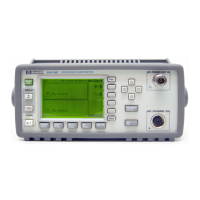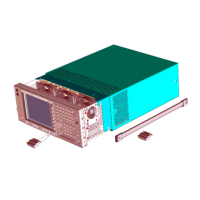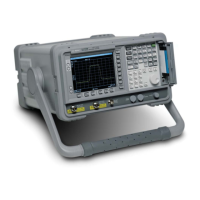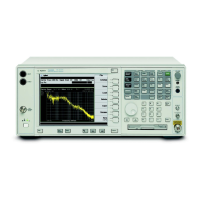Power Meter Operation
Making Measurements using Frequency Dependent Offset Tables
2-32 Agilent E4419B User’s Guide
6. Press . The current setting of the frequency is displayed
under the softkey.
7. To change this setting press . The power meter displays
the frequency in a pop up window. Modify this frequency (see
below) as desired.
■ Use or to modify the digit on which the cursor is
currently positioned.
■ Use or to move to other digits.
8. To confirm your choice press the appropriate frequency unit.
9. Connect the power sensor to the signal to be measured.
10. You must set the display to the type of measurement you require.
This can either be a direct channel measurement, a ratio
measurement of both channels, or a difference measurement
between both channels. Use the following key presses:
Press , . Select the appropriate softkey for
the measurement you require, either , , , , or ,
then , or .
11. The measurement result is now displayed.
Note If the measurement frequency does not correspond directly to a
frequency in the sensor calibration table (if selected) and the
frequency dependent offset table being used, the power meter
calculates the calibration factor and offset using linear
interpolation.
If you enter a frequency outside the frequency range defined in the
sensor calibration table or the frequency dependent offset table,
the power meter uses the highest or lowest frequency point in the
appropriate table to set the calibration factor and offset.
The value of the calibration factors being used by the power meter
to make a measurement is displayed under the or
softkeys.
Editing Frequency Dependent Offset Tables
You can edit frequency dependent offset tables using the “Edit” menu as
shown in Figure 2-7.
A Freq
A Freq
Meas
Setup
Input Select
A B A/B B/A
More
A-B
A Cal Fac
B Cal Fac
HP4402.book Page 32 Thursday, November 30, 2000 1:39 PM
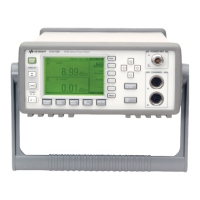
